| Listing 1 - 7 of 7 |
Sort by
|
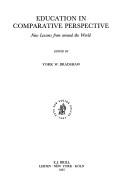
ISBN: 9004107347 Year: 1997 Publisher: Leiden ; New York ; Köln Brill
Abstract | Keywords | Export | Availability | Bookmark
 Loading...
Loading...Choose an application
- Reference Manager
- EndNote
- RefWorks (Direct export to RefWorks)
Book
ISBN: 0585316287 Year: 1997 Publisher: New York : New York Univ. Press,
Abstract | Keywords | Export | Availability | Bookmark
 Loading...
Loading...Choose an application
- Reference Manager
- EndNote
- RefWorks (Direct export to RefWorks)
With an anthropologist's keen eye, the author takes us through a full year in a Japanese public elementary school, bringing us into the classroom with its comforting structure, lively participation, varied teaching styles, and non-authoritarian teachers.
Periodical
Year: 1997 Publisher: Gaborone, Botswana : South African Comparative and History of Education Society (SACHES),
Abstract | Keywords | Export | Availability | Bookmark
 Loading...
Loading...Choose an application
- Reference Manager
- EndNote
- RefWorks (Direct export to RefWorks)
Education --- Comparative education --- Business and education --- Business and education. --- Comparative education. --- Education. --- Africa, Southern.
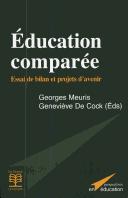
ISBN: 2804124657 9782804124656 Year: 1997 Volume: *11 Publisher: Bruxelles : De Boeck Université,
Abstract | Keywords | Export | Availability | Bookmark
 Loading...
Loading...Choose an application
- Reference Manager
- EndNote
- RefWorks (Direct export to RefWorks)
Comparative education --- Education --- Education [Comparative ] --- Enseignement --- Enseignement comparé --- Onderwijs --- Onderwijskunde [Vergelijkende ] --- Opvoeding --- Pédagogie comparée --- Vergelijkende onderwijskunde --- Vergelijkende pedagogiek --- Education comparée --- Education, Comparative --- History --- Comparative education. --- Historische en vergelijkende pedagogiek --- Historische en vergelijkende pedagogiek. --- Education comparée
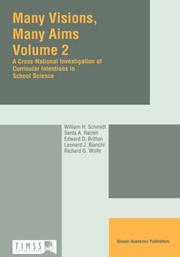
ISBN: 9780792344384 0792344383 9780306472084 0792344421 0792344367 9786610207589 1280207582 0306472082 Year: 1997 Publisher: Dordrecht, Netherlands ; Boston, Massachusetts : Kluwer Academic/Plenum Publishers,
Abstract | Keywords | Export | Availability | Bookmark
 Loading...
Loading...Choose an application
- Reference Manager
- EndNote
- RefWorks (Direct export to RefWorks)
PREFACE The Third International Mathematics and Science Study (TIMSS), sponsored by the International Association for the Evaluation of Educational Achievement (IEA) and the g- ernments of the participating countries, is acomparative study of education in mathematics and the sciences conducted in approximately 50 educational systems on six continents. The goal of TIMSS is to measure student achievement in mathematics and science in participating countries and to assess some of the curricular and classroom factors that are related to student learning in these subjects. The study is intended to provide educators and policy makers with an unpar- leled and multidimensional perspective on mathematics and science curricula; their implem- tation; the nature of student performance in mathematics and science; and the social, econ- ic, and educational context in which these occur. TIMSS focuses on student learning and achievement in mathematics and science at three different age levels, or populations. • Population 1 is defined as all students enrolled in the two adjacent grades that contain the largest proportion of 9-year-old students; • Population 2 is defined as all students enrolled in the two adjacent grades that contain the largest proportion of 13-year-old students; and • Population 3 is defined as all students in their final year of secondary education, incl- ing students in vocational education programs. In addition, Population 3 has two “specialist” subpopulations: students taking advanced courses in mathematics (mathematics specialists), and students taking advanced courses in physics (physics specialists).
Mathematics --- Science --- Curriculum evaluation. --- Mathématiques --- Sciences --- Programmes d'études --- Study and teaching. --- Etude et enseignement --- Evaluation --- Education. --- Mathematics. --- Science_xStudy and teaching. --- International education. --- Comparative education. --- Science education. --- International and Comparative Education. --- Science Education. --- Mathematics Education. --- International education . --- Mathematics—Study and teaching . --- Science education --- Scientific education --- Education, Comparative --- Education --- Global education --- Intellectual cooperation --- Internationalism --- History --- Evaluation of curriculum --- Educational evaluation
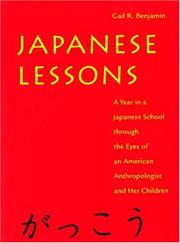
ISBN: 081478612X 0814712916 9780814786123 Year: 1997 Publisher: New York, NY : New York University Press,
Abstract | Keywords | Export | Availability | Bookmark
 Loading...
Loading...Choose an application
- Reference Manager
- EndNote
- RefWorks (Direct export to RefWorks)
Gail R. Benjamin reaches beyond predictable images of authoritarian Japanese educators and automaton schoolchildren to show the advantages and disadvantages of a system remarkably different from the American one... --The New York Times Book Review Americans regard the Japanese educational system and the lives of Japanese children with a mixture of awe and indignance. We respect a system that produces higher literacy rates and superior math skills, but we reject the excesses of a system that leaves children with little free time and few outlets for creativity and self-expression. In Japanese Lessons, Gail R. Benjamin recounts her experiences as a American parent with two children in a Japanese elementary school. An anthropologist, Benjamin successfully weds the roles of observer and parent, illuminating the strengths of the Japanese system and suggesting ways in which Americans might learn from it. With an anthropologist's keen eye, Benjamin takes us through a full year in a Japanese public elementary school, bringing us into the classroom with its comforting structure, lively participation, varied teaching styles, and non-authoritarian teachers. We follow the children on class trips and Sports Days and through the rigors of summer vacation homework. We share the experiences of her young son and daughter as they react to Japanese schools, friends, and teachers. Through Benjamin we learn what it means to be a mother in Japan--how minute details, such as the way mothers prepare lunches for children, reflect cultural understandings of family and education. Table of Contents Acknowledgments 1. Getting Started 2. Why Study Japanese Education? 3. Day-to-Day Routines 4. Together at School, Together in Life 5. A Working Vacation and Special Events 6. The Three R's, Japanese Style 7. The Rest of the Day 8. Nagging, Preaching, and Discussions 9. Enlisting Mothers' Efforts 10. Education in Japanese Society 11. Themes and Suggestions 12. Sayonara Appendix. Reading and Writing in Japanese References Index
American students -- Japan. --- Benjamin, Gail. --- Comparative education. --- Education, Elementary -- Japan -- Urawa-shi. --- Elementary schools -- Japan -- Urawa -- Sociological aspects. --- Students, Foreign -- Japan. --- Education, Elementary --- Students, Foreign --- American students --- Elementary schools --- Comparative education --- Education --- Social Sciences --- History of Education --- Sociological aspects --- Sociological aspects. --- Education, Comparative --- Grade schools --- Children --- Elementary education --- Primary education (Great Britain) --- School children --- Education (Elementary) --- Schools --- Middle schools --- Students --- History
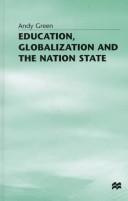
ISBN: 0333683161 0333683153 Year: 1997 Publisher: Basingstoke Macmillan
Abstract | Keywords | Export | Availability | Bookmark
 Loading...
Loading...Choose an application
- Reference Manager
- EndNote
- RefWorks (Direct export to RefWorks)
Comparative education. --- Education and state --- Education --- Historische en vergelijkende pedagogiek. --- Lerarenopleiding --- History --- Case studies. --- Algemeen. --- Comparative education --- Children --- Education, Primitive --- Education of children --- Human resource development --- Instruction --- Pedagogy --- Schooling --- Students --- Youth --- Civilization --- Learning and scholarship --- Mental discipline --- Schools --- Teaching --- Training --- Education policy --- Educational policy --- State and education --- Social policy --- Endowment of research --- Education, Comparative --- History&delete& --- Case studies --- Government policy
| Listing 1 - 7 of 7 |
Sort by
|

 Search
Search Feedback
Feedback About
About Help
Help News
News